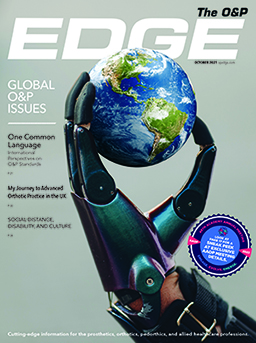"Bundling" is Coming to a Hospital Near You
NAAOP Legislative Webcast: "Bundling" is Coming to a Hospital Near You 5:38
September 01, 2016
"Bundling" is a concept that is sweeping across the Medicare program and will eventually have significant implications on orthotics and prosthetics. The Secretary of Health and Human Services recently announced that by 2018, 50 percent of Medicare patients will be in “alternative payment methods” or “APMs” rather than the fee for service program. Bundling is considered an APM. There are many forms to bundling and the Centers for Medicare and Medicaid Services (CMS) is doing its best to accelerate this trend.
BCPI: The Bundled Payments for Care Improvement Initiative sits under the Centers for Medicare and Medicaid Innovation (CMMI). This is a program that essentially experiments with APMs and number over 1,500 different models at the current time. Hospitals and hospital systems across the country have entered into arrangements with CMMI to provide care for certain patients with particular conditions outside of the fee for service payment system. In many instances, these models establish certain quality indicators, cap payments, and reward providers who save money (compared to the fee for service payment system) by sharing the savings with them. The intention is to study different methods of Medicare payment and make permanent those that are successful in improving quality and decreasing cost. Although this program has been under way for several years, there is little public information that describes which programs are most successful and which have failed.
Mandatory Bundling: Late last year, CMS issued a proposed rule to establish a mandatory bundling program for hip and knee joint replacement patients in many cities across the country. Known as the Comprehensive Care for Joint Replacement bundled payment system (CJR), this program took effect on April 1, 2016. Much like the BCPI programs, the CJR establishes quality indicators and compares expenditures of a joint replacement episode of care to the cost of similar care under the fee for service program and rewards providers who more efficiently provide that care. Because the program is so new, there is no real information that evaluates patient outcomes or whether savings are being achieved. This is the first mandatory bundled payment system under the Medicare program and serves as a template for other mandatory bundling programs. In fact, CMS recently announced a proposed rule to similarly bundle cardiac care. That same proposed rule expanded the number of conditions under the CJR bundling payment system.
There are many other forms of bundling as well including Accountable Care Organizations, Shared Savings Programs and even managed care arrangements under the Medicare Advantage program. In short, bundling is here to stay and the O&P profession must carve a path into bundled payment systems to ensure continued patient access to quality O&P care. Unfortunately, this path is not clear. Bundled payment systems are typically time limited, usually a 90-day episode of care. So, for instance, new amputees would likely be outside of the bundled payment episode once they are fully ready for a definitive prosthesis. This may also be true, though to a lesser extent, with custom orthotics. But the referral to a particular provider may very well be established within that initial 90-day window. Therefore, O&P practices across the country must figure out how their local market is reacting to bundling and engage hospitals, health systems, managed care organizations, ACO's, and other bundled payment entities to find their rightful place in these alternative payment models.



























-
-
-
-
CONTACT US